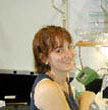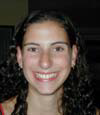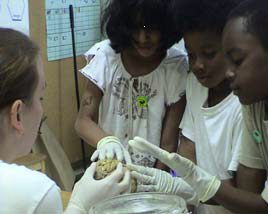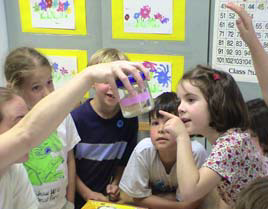Originally published February 2005.


A few neuroscience students took up the challenge!
It is generally accepted that if you can explain what you do to your grandma then you can explain it to the public. A few neuroscience students have recently taken on the challenge of communicating their research to a lay audience. Lisa Rattiner, Dinesh Raju,


Lizabeth Martin, and Jamie Hatcher have all received the ORDER Fellowship, a Howard Hughes Initiative designed to introduce Emory undergraduates to research that is taking place here at Emory. These fellows design and teach a freshman seminar course that emphasizes their own personal discoveries in the lab. Lisa Rattiner, who completed the fellowship last year, emphasizes, “This fellowship offers a unique challenge to novice teachers in that they must learn how to communicate their research


in an engaging and exciting way that will not only capture the attention of freshman students but also be instructive and educational.” At a different level, Leah Andersen and Charlene Cole received the year-long PRISM teaching fellowship, an integrative K-12 program designed to instill a compelling need to know in the next generation. These two brave students have learned the fine art of balancing their graduate school requirements with a large teaching load outside of Emory. More information on fellowship availabilities can be found at: http://www.biomed.emory.edu/PROGRAM_SITES/BCDB/multimedia/pdf/fellowship_info.pdf

